stabman
Gold Member
- Joined
- Sep 17, 2007
- Messages
- 21,327
I was watching that show Alone on History Channel, and I couldn't help but notice how annoying it was for the contestants to get a fire going in such wet conditions.
It made me wonder how well I'd do with fire in wet conditions...I generally head out to the woods when it is nice.
Well, this past Saturday was perfect to find out.
Environment Canada put out a severe rainfall warning, and there were flood warnings and flood watches...ended up being that a bunch of the surrounding area DID flood while I was out in the woods.
You see, I did head out there...with two 6' by 8' tarps I bought at the dollar store, and a bunch of knives (which weren't from the dollar store ).
).
My brother and I set this shelter up within 40 minutes of arrival (perhaps less...too busy working to look at exact times).
9 poles (which were cut at the site, and sharpened on one end), some scrap nylon rope, and dollar store tarps worked out great. :thumbup:
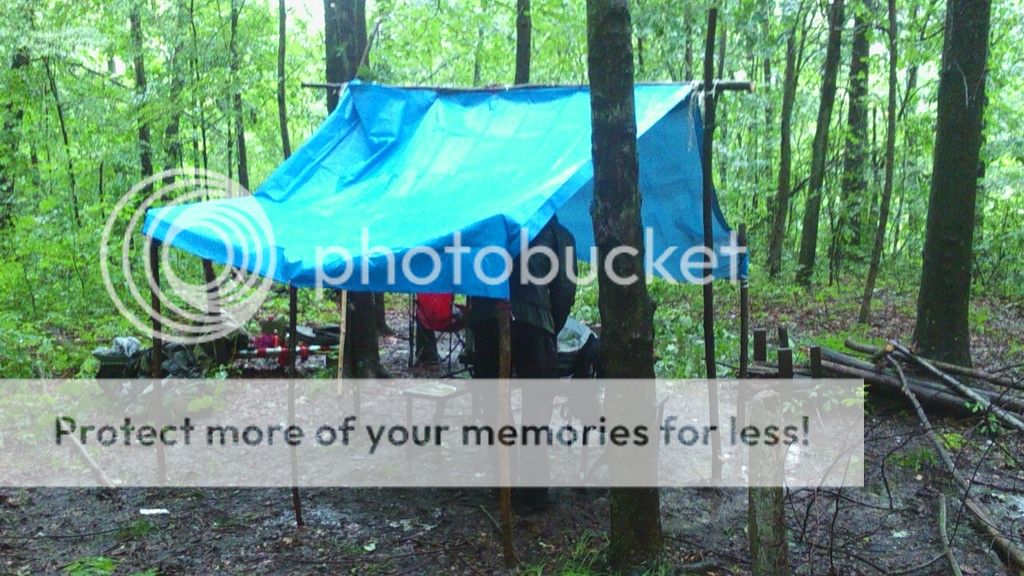
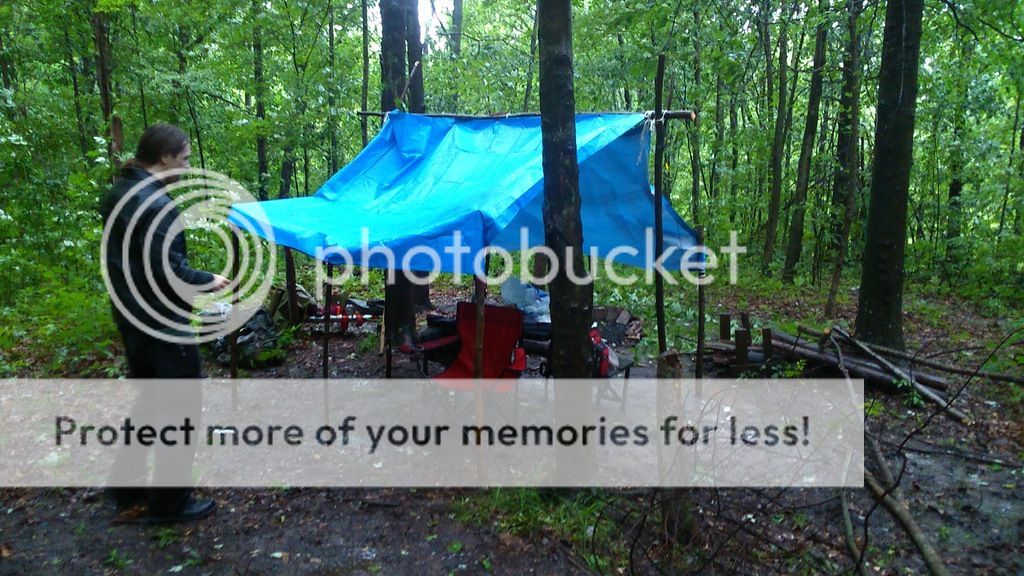
We then split a bunch of deadwood, which was really friggin wet on the outside. In this pic it's my brother using his RD9; I split the rest with my blue handled monstrosity (which also cut all the poles), and I put them in the shelter as they were split, to keep them dry. My brother then further split them so we had various thicknesses of kindling.
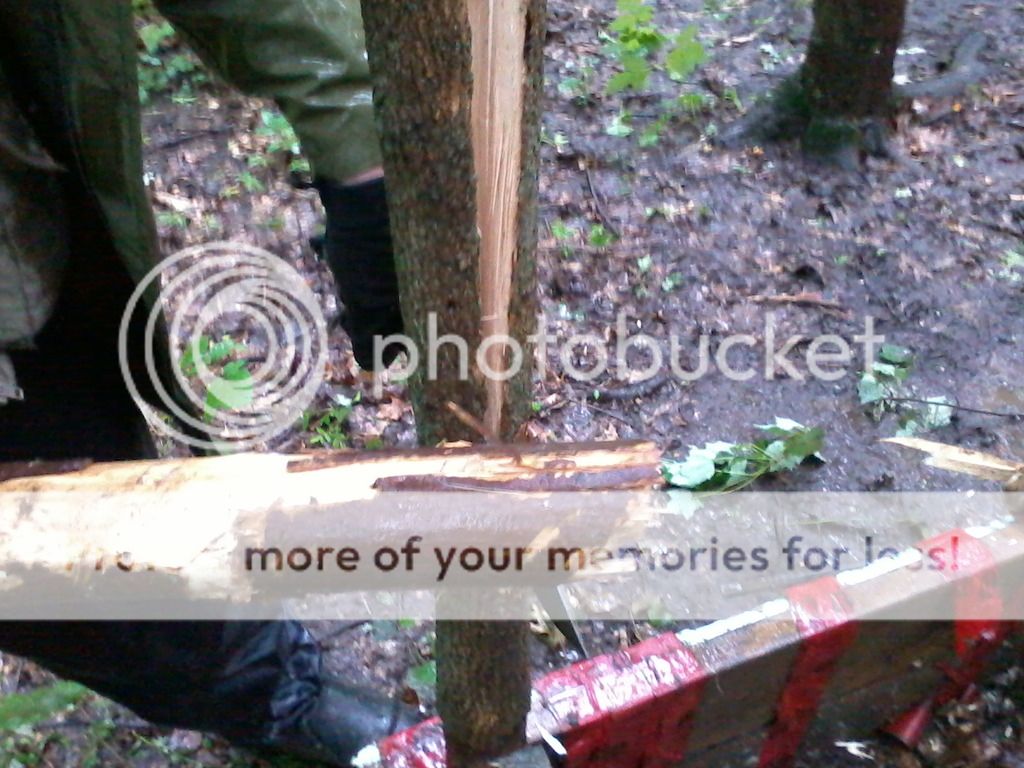
You can see our under-the-tarp chopping block log in this pic:
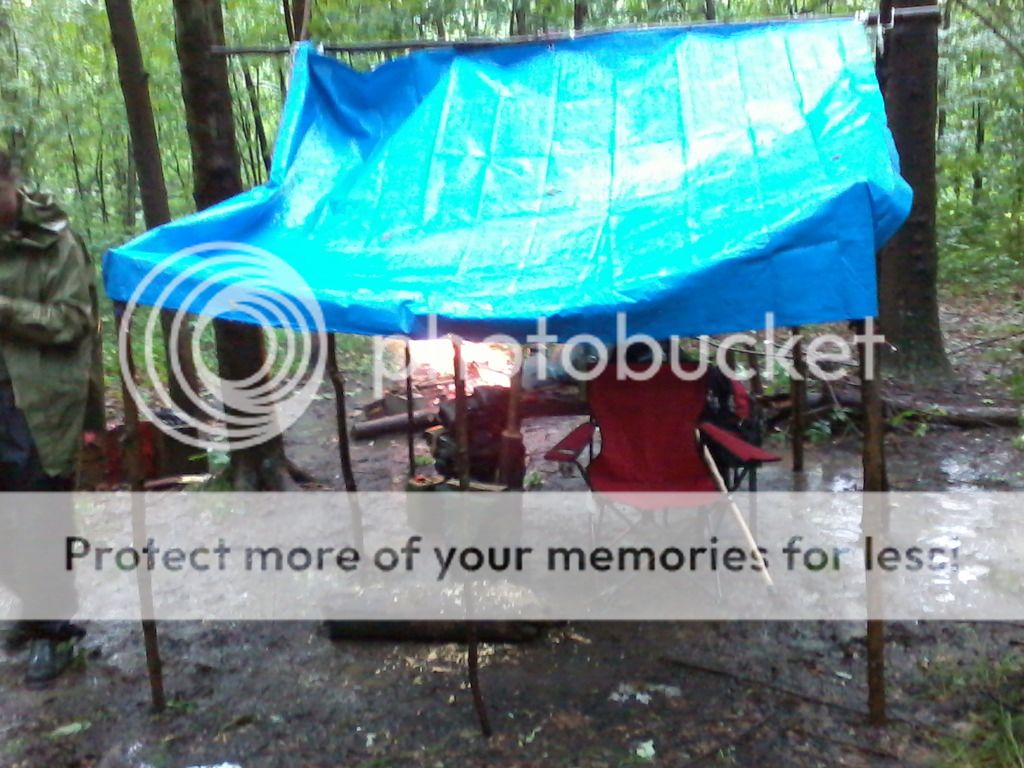
You saw fire in the last pic...here's the fire beginnings:
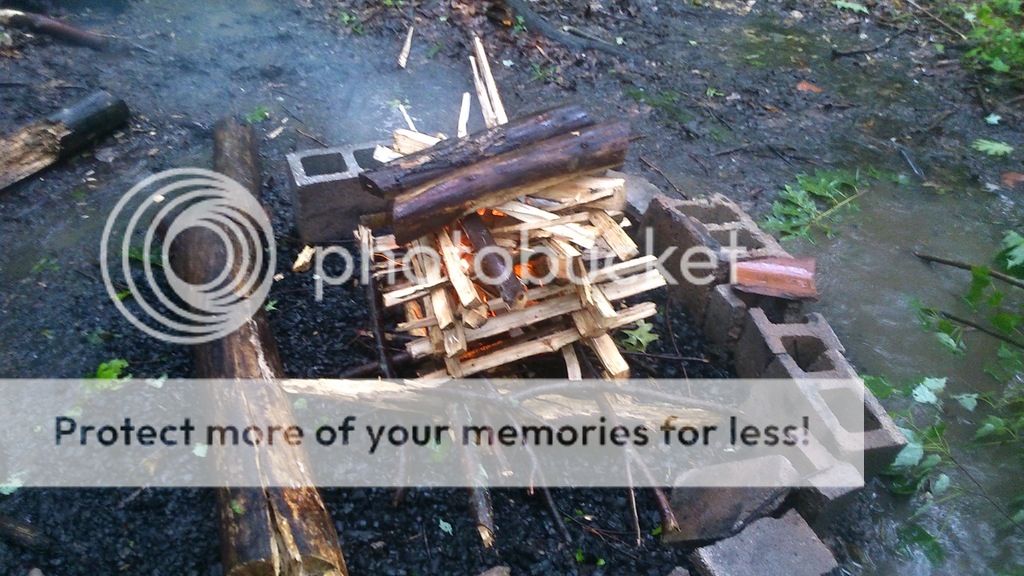
We had gathered all our materials under the tarps, then made a fire "plan of attack".
The rain never stopped, but it slowed a tad for a short bit, so we ran out and made the fire right then.
The fire got bigger though...
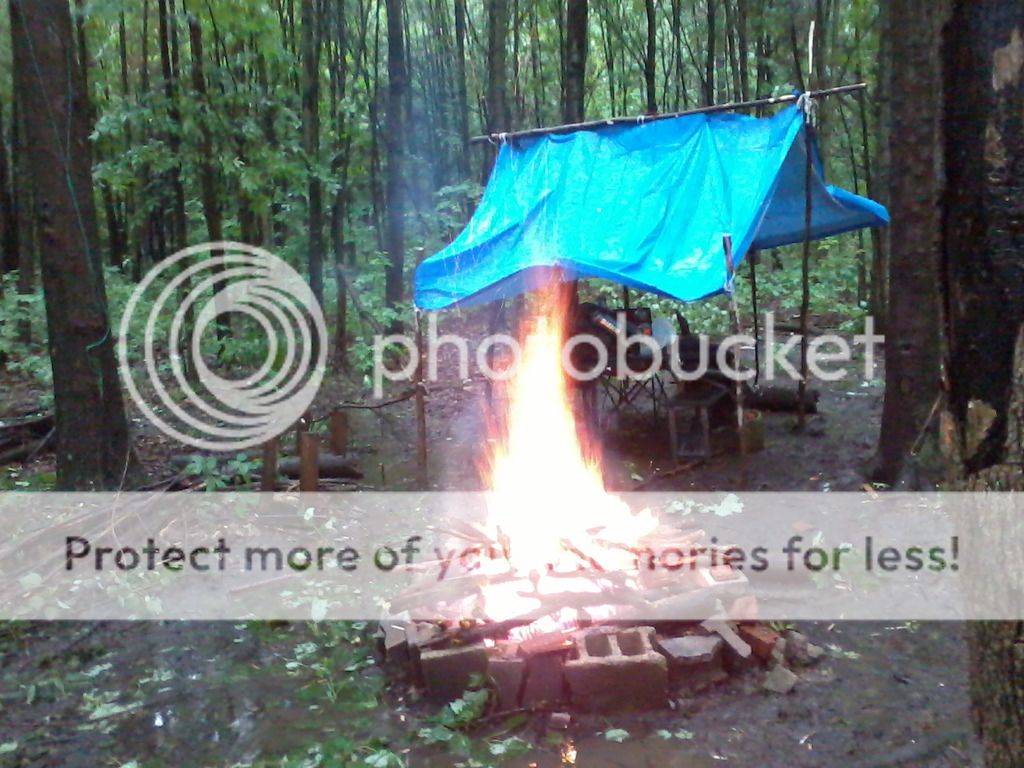
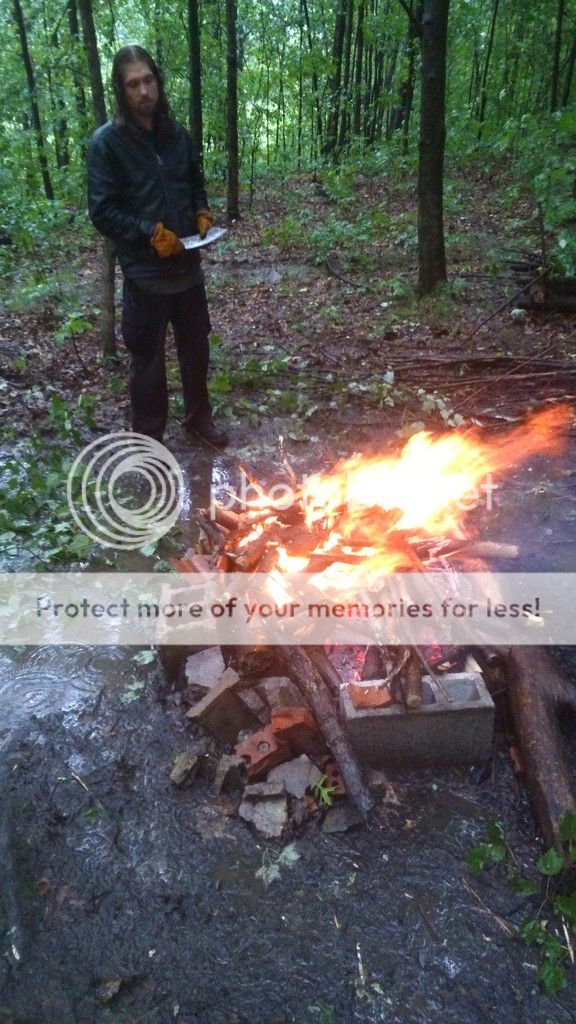
The secret to keeping it going despite flood level rain was to provide a wooden "roof" for the fire at all times, so the rain couldn't ever douse the coals.
You can see the wetness:
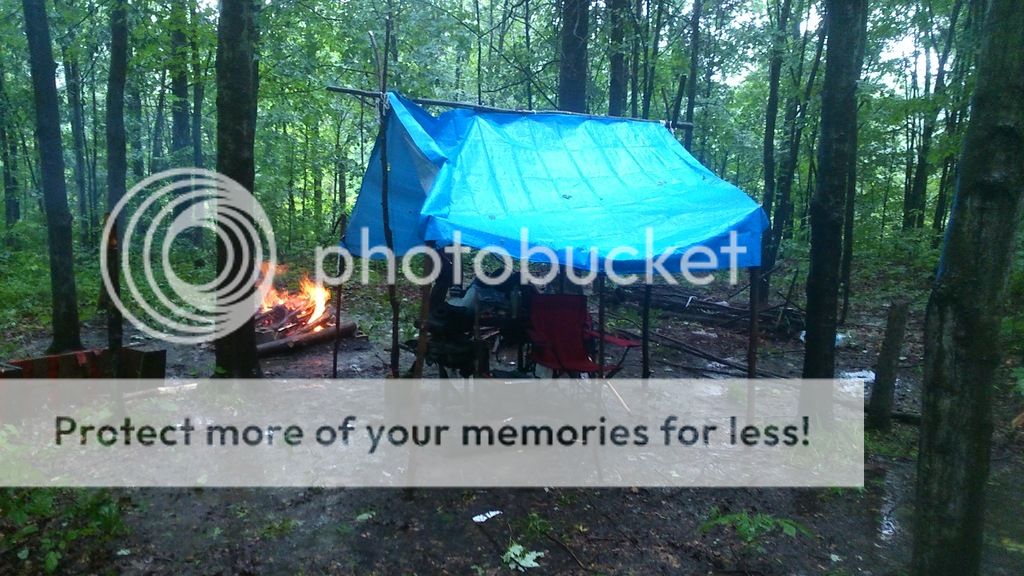
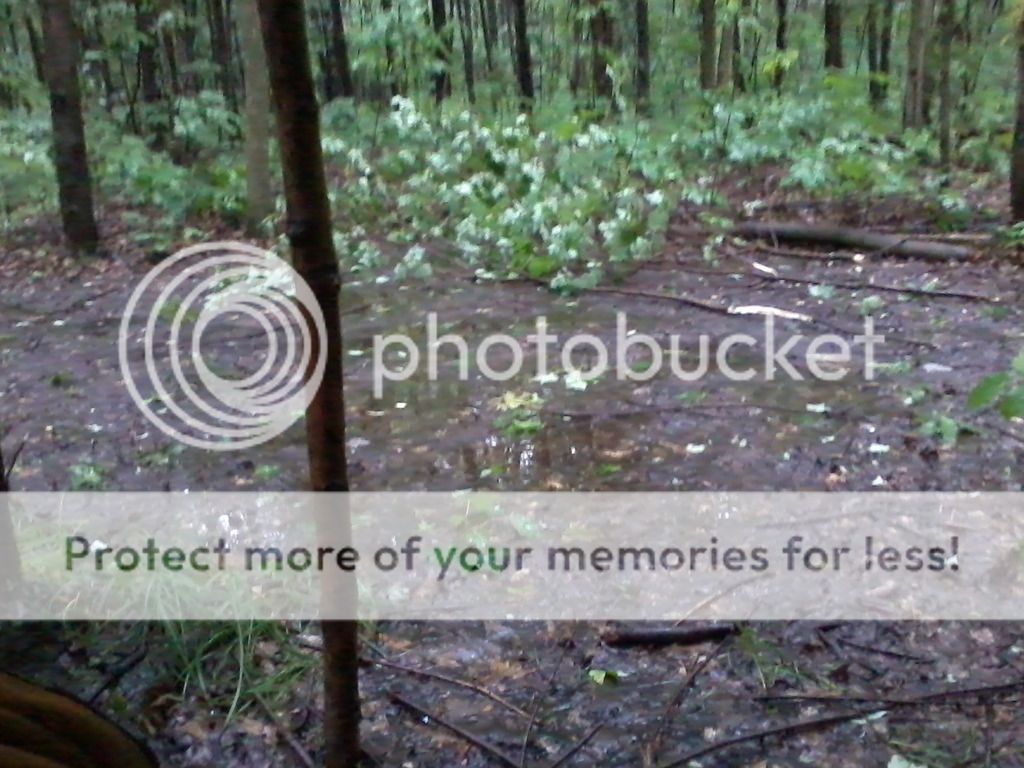
The knife that did most of the work:
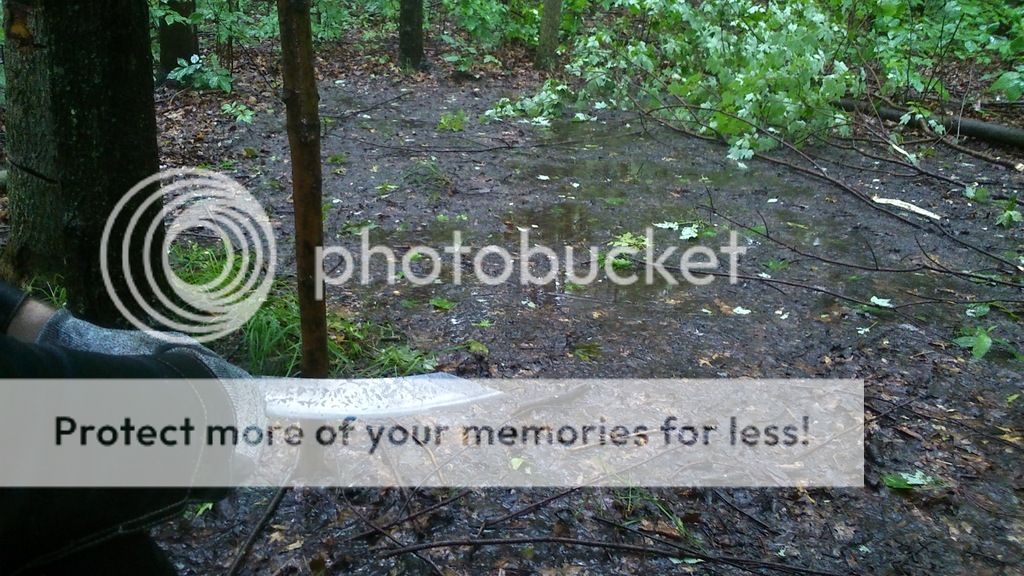
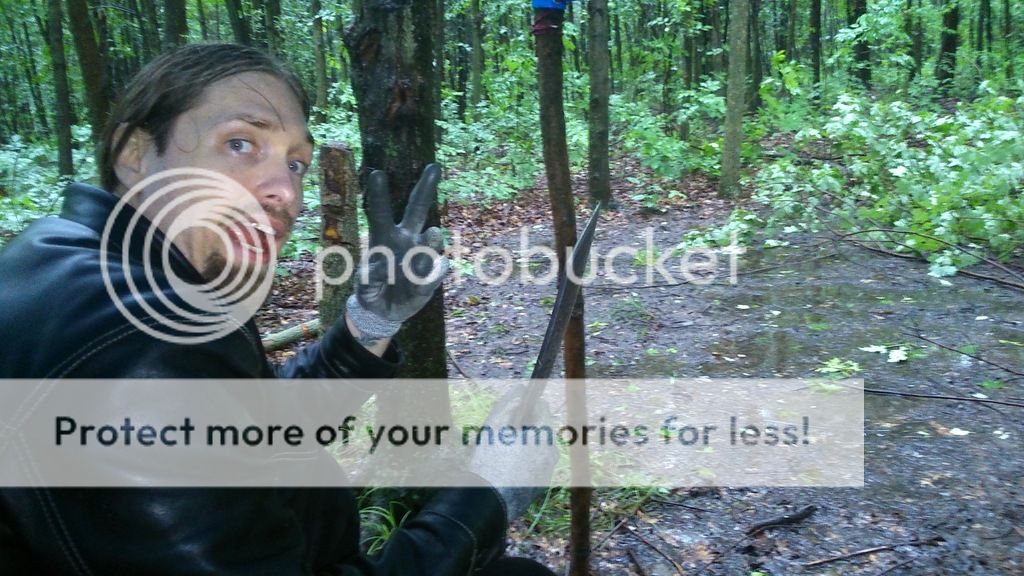
Note the high tech leather jacket I use as rain gear.
I had brought a bunch of other knives to test out, but it was too damn wet, and all effort had to be put into fire, and cooking the food.
Here's a Boker Plus War Toad:
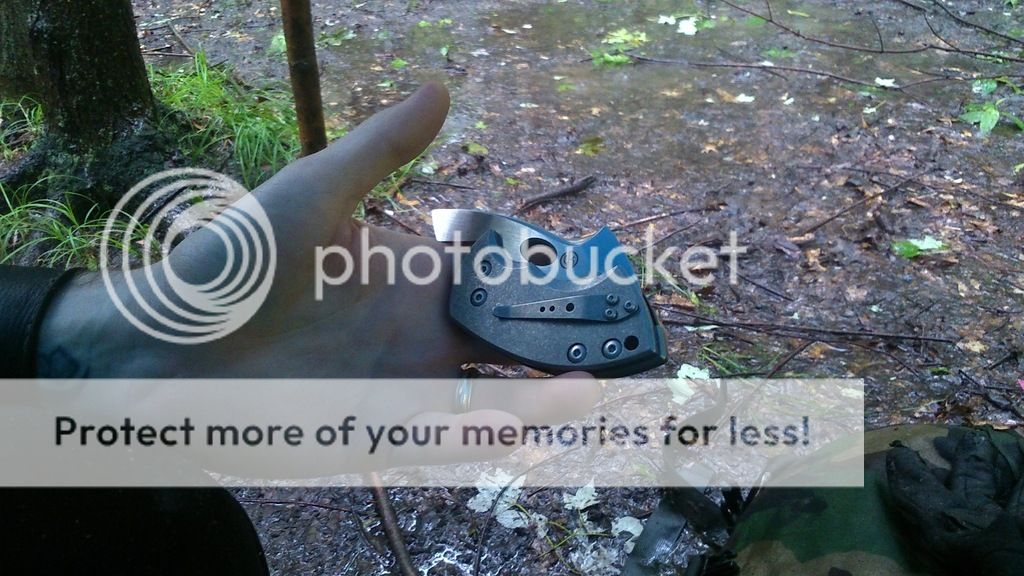
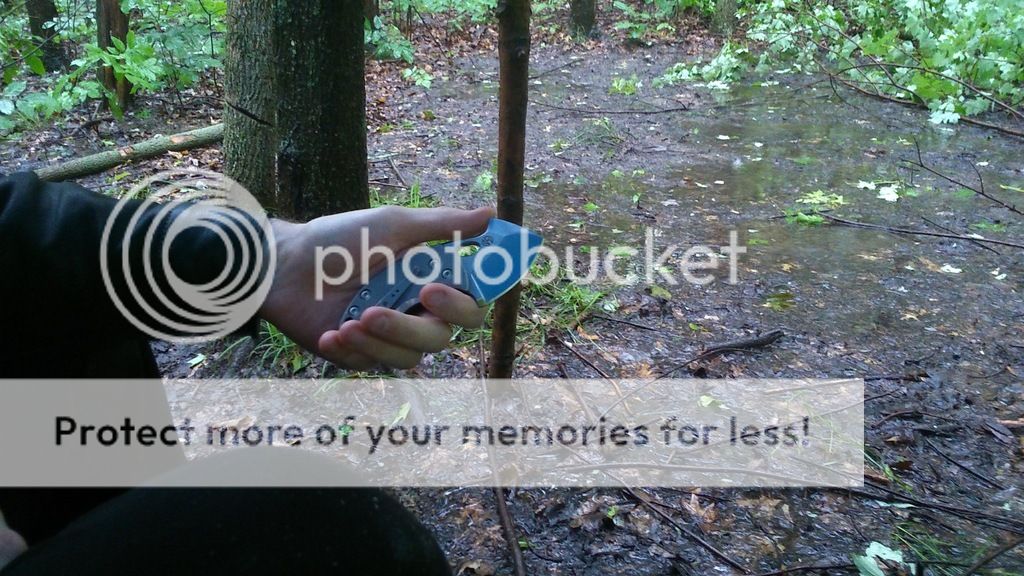
It was okay at cutting, but not awesome with the factory edge.
It's better now that I have improved the edge, but it did work great for posing with this moth
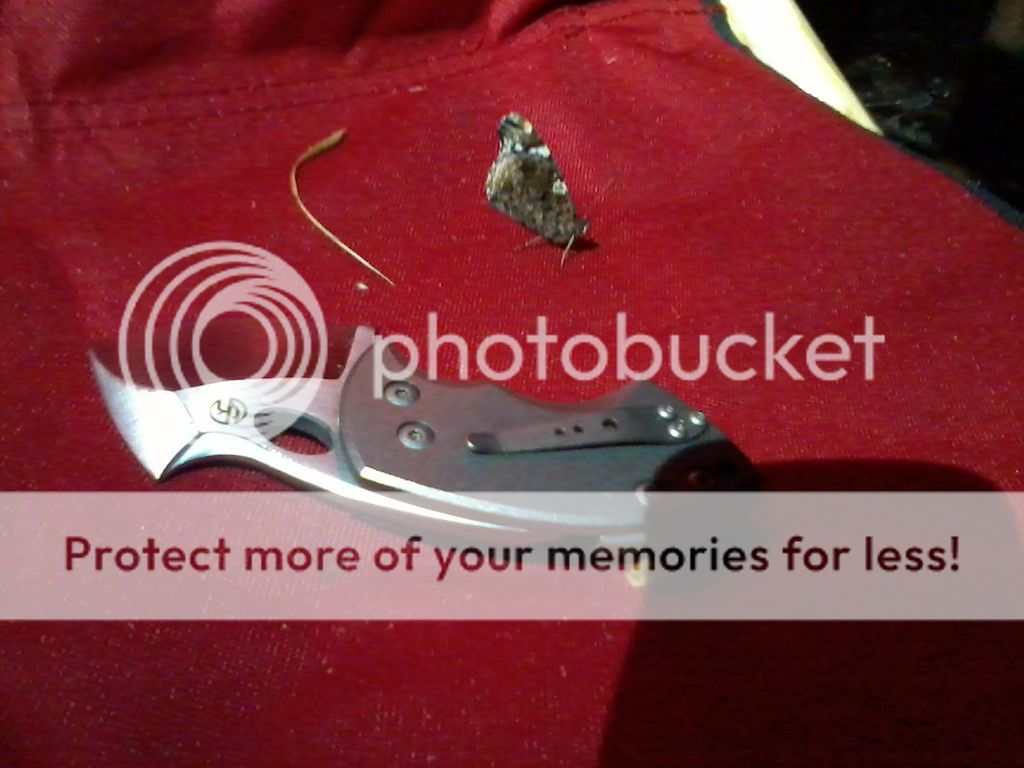
The insanely tough tree we cut down a previous time was still there (somehow it had fully seasoned rather than rotted, though dead), and my brother decided to make a handle for the splitting wedge/old axe head I gave him recently:
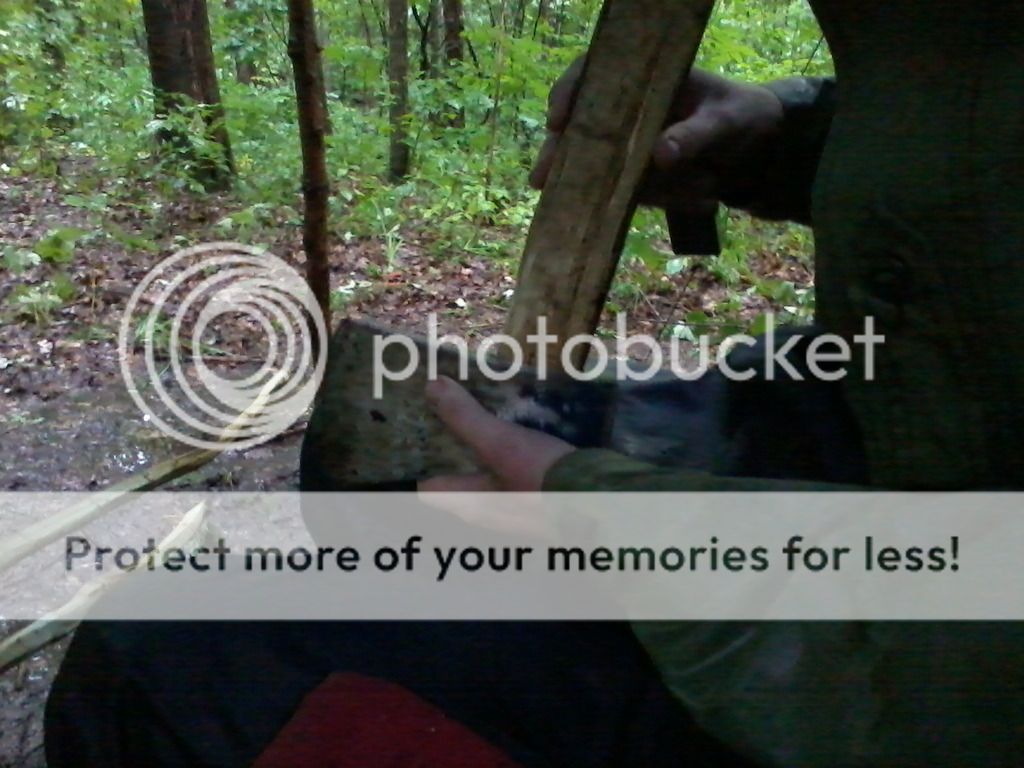
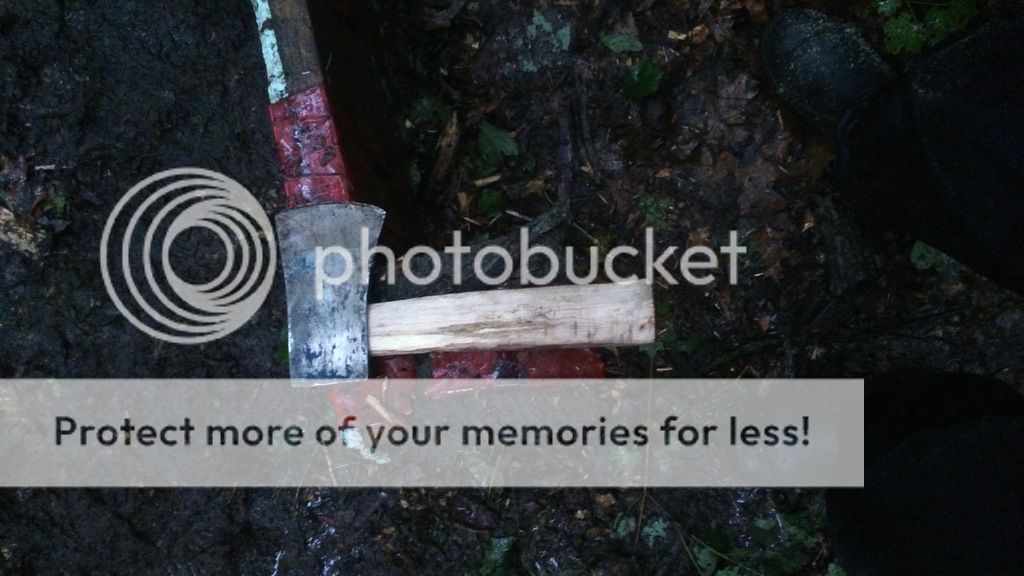
All in all it was very successful.
I had planned on testing out how much of a protective barrier against animals could be made despite crummy conditions...and the answer, as I found out, was none, for that day at least.
The shelter held up very well to big winds and driving rain, rain that flooded almost all the surrounding area, and turned the forest into a swamp.
It made me wonder how well I'd do with fire in wet conditions...I generally head out to the woods when it is nice.
Well, this past Saturday was perfect to find out.
Environment Canada put out a severe rainfall warning, and there were flood warnings and flood watches...ended up being that a bunch of the surrounding area DID flood while I was out in the woods.
You see, I did head out there...with two 6' by 8' tarps I bought at the dollar store, and a bunch of knives (which weren't from the dollar store
My brother and I set this shelter up within 40 minutes of arrival (perhaps less...too busy working to look at exact times).
9 poles (which were cut at the site, and sharpened on one end), some scrap nylon rope, and dollar store tarps worked out great. :thumbup:


We then split a bunch of deadwood, which was really friggin wet on the outside. In this pic it's my brother using his RD9; I split the rest with my blue handled monstrosity (which also cut all the poles), and I put them in the shelter as they were split, to keep them dry. My brother then further split them so we had various thicknesses of kindling.

You can see our under-the-tarp chopping block log in this pic:

You saw fire in the last pic...here's the fire beginnings:

We had gathered all our materials under the tarps, then made a fire "plan of attack".
The rain never stopped, but it slowed a tad for a short bit, so we ran out and made the fire right then.
The fire got bigger though...


The secret to keeping it going despite flood level rain was to provide a wooden "roof" for the fire at all times, so the rain couldn't ever douse the coals.
You can see the wetness:


The knife that did most of the work:


Note the high tech leather jacket I use as rain gear.
I had brought a bunch of other knives to test out, but it was too damn wet, and all effort had to be put into fire, and cooking the food.
Here's a Boker Plus War Toad:


It was okay at cutting, but not awesome with the factory edge.
It's better now that I have improved the edge, but it did work great for posing with this moth

The insanely tough tree we cut down a previous time was still there (somehow it had fully seasoned rather than rotted, though dead), and my brother decided to make a handle for the splitting wedge/old axe head I gave him recently:


All in all it was very successful.
I had planned on testing out how much of a protective barrier against animals could be made despite crummy conditions...and the answer, as I found out, was none, for that day at least.
The shelter held up very well to big winds and driving rain, rain that flooded almost all the surrounding area, and turned the forest into a swamp.
Last edited:
